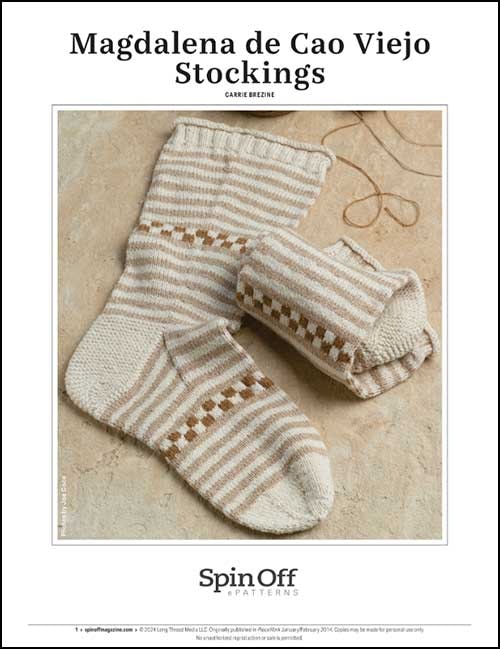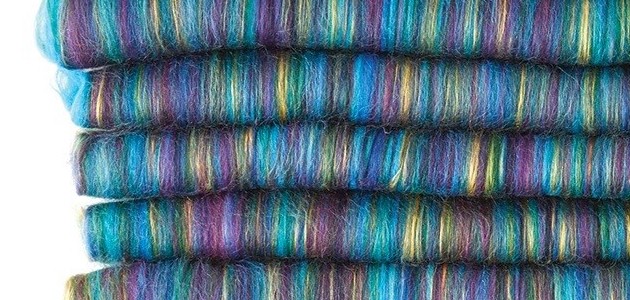The Spin Off team has just sent the Summer 2024 issue to press, and it will start arriving in inboxes and mailboxes soon! One of the pieces we are excited to share with you in the Summer issue is a pair of cotton socks by Dr. Carrie Brezine, adapted for handspun by Devin Helmen.
Dr. Brezine’s original sock pattern and article entitled “The Oldest Knitting in the New World” was published in the January/February 2014 issue of PieceWork. For Spin Off, Devin adapted the pattern for handspun cotton, like the original socks Dr. Brezine studied in archaeological excavations on the north coast of Peru, where “[e]xcavations of the colonial town of Magdalena de Cao Viejo have provided another textile first: the first material evidence of knitting in the Americas.”
As Dr. Brezine states, “Pre-Columbian Andean textiles long have been recognized as some of the most beautiful and complex in the world. Andean artists were masters of spinning and dyeing cotton and camelid fibers, and were expert weavers.
“No examples of pre-Columbian knitted fabrics exist. Today, although Andean knitters create intricately patterned work in multiple colors at a fine gauge, little is known about the introduction of knitting to South America, how it spread to the indigenous population, and how a specifically Andean knitting tradition developed.”
 Partly exposed fragment of knitting at the colonial town of Magdalena de Cao Viejo. Date unknown. Photographed in 2013. Photo by Carrie Brezine
Partly exposed fragment of knitting at the colonial town of Magdalena de Cao Viejo. Date unknown. Photographed in 2013. Photo by Carrie Brezine
In her PieceWork article, Brezine describes the excavations that were performed at the site between 2004 and 2010, revealing over 3,200 textile artifacts, many of which are well preserved due to the dry desert climate. The collection of artifacts—the largest of colonial textiles from the Andes—includes indigenous cotton plainweave and imported European fabrics, but also fragments of sheep’s wool, which would have been a recent introduction from Spain.

We’re excited to offer current Spin Off subscribers not only access to the full article and original pattern by Carrie Brezine, but the entire issue of PieceWork, which also includes Sanquar gloves from Scotland, a sixteenth-century Basque whaler’s cap, and so much more. Visit the Spin Off Library to access the issue.
Find even more knitting inspiration in the Summer 2024 issue of Spin Off, available May 30th.
Debbie Blair is the associate editor of Spin Off magazine. A lifelong crafter and avid reader, she finds her happy place reading and relaxing next to a mountain stream.


